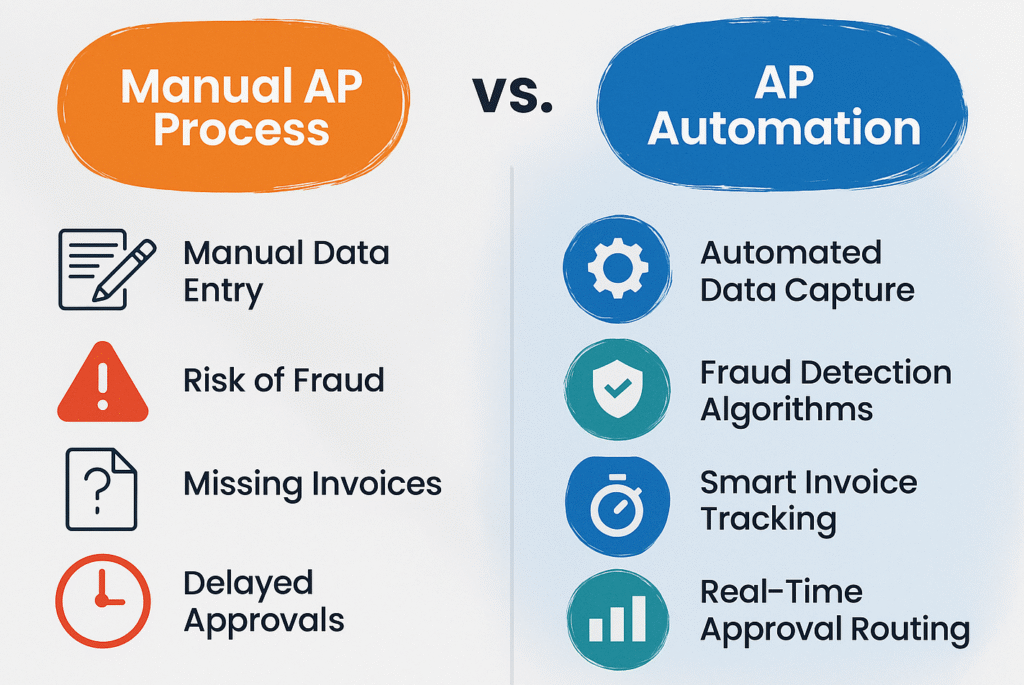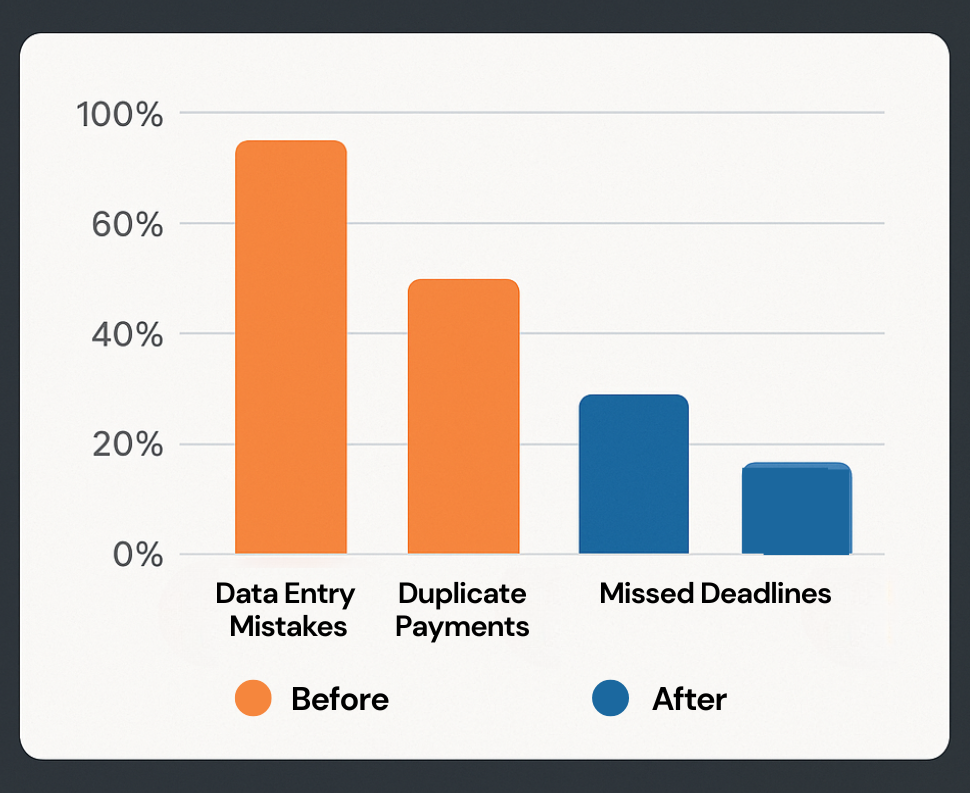In today’s fast-paced business world, maintaining financial security and streamlining operations is crucial. Accounts payable (AP) automation has emerged as a powerful tool for businesses looking to safeguard transactions, reduce errors, and minimize fraud risk. By replacing manual AP processes with automated systems, businesses can improve operational efficiency while enhancing security. This article explores how AP automation reduces errors and fraud, leading to more secure and efficient financial workflows.


Manual AP workflows involve numerous human touchpoints and paper-based processes, introducing inefficiencies and errors. Automation eliminates these steps by digitizing the entire process, providing greater oversight, and ensuring that transactions are accurate, timely, and secure.
Automated systems create a streamlined and controlled process, reducing human error and improving payment accuracy. They detect inconsistencies, missed payments, and fraud attempts before they escalate into larger financial issues.
Manual accounts payable processing is fraught with risks that can lead to financial losses, including:
These risks not only affect your bottom line but can also damage vendor trust and compliance standing. AP automation mitigates them through end-to-end visibility and controls, creating secure, error-free workflows.
Automated systems use role-based access controls and approval workflows to ensure payments are authorized only by designated personnel. This prevents unauthorized transactions and minimizes internal fraud risks. Employees can access only the system areas relevant to their roles, significantly reducing fraudulent activities.
Multi-level approval processes allow businesses to establish different tiers of authorization for various payment amounts, reducing unauthorized transactions.

AP automation enhances fraud detection and prevention by:
Fraud is a significant concern in manual AP processes. From fake invoices to duplicate payments, weak controls increase financial risks. AP automation provides tools to identify red flags and mitigate threats before they lead to costly mistakes.
AI-powered fraud detection features continuously analyze transaction patterns for unusual activity. These systems learn from past behavior, helping to predict and flag potential fraud attempts in real time.
Duplicate payments are common in manual AP processing. Without automated checks, businesses may accidentally pay the same invoice twice. AP automation systems use advanced matching algorithms to prevent duplicate payments.
Unauthorized transactions are another major concern. AP automation restricts access to sensitive data and requires multiple levels of approval before payments are processed, reducing unauthorized financial activities.
AI-driven fraud detection analyzes financial transactions for inconsistencies. These systems automatically flag suspicious activity, allowing businesses to investigate and resolve potential fraud quickly.
AI tools also learn from previous transactions, improving their ability to identify fraud over time. This evolving approach helps businesses stay ahead of fraudsters.
AP automation systems implement role-based access controls, ensuring only authorized personnel can approve payments or modify system settings. This reduces internal fraud risk by restricting access to necessary functions.
Comprehensive audit trails record every system action, creating a transparent record of all transactions. This feature makes it easier to trace fraudulent activities and provides accountability within the AP process.
Automated invoice matching ensures invoices align with purchase orders and receipts before payments are processed. This reduces the likelihood of paying for non-delivered goods or fraudulent invoices, strengthening financial security.

Minimizing Human Errors: Human errors are an inherent risk in manual AP processing, especially with large invoice volumes. AP automation reduces errors by automating data entry and approval workflows, ensuring that each step is completed accurately and consistently.
Reducing Data Entry Mistakes with OCR Technology: Optical Character Recognition (OCR) scans paper invoices and captures relevant information, such as vendor details, payment amounts, and due dates. This technology reduces data entry mistakes, improving invoice accuracy.
Eliminating Payment Delays with Automated Workflows: Manual AP processes are often slow and prone to delays, especially when invoices require multiple approvals. AP automation accelerates approvals by automatically routing invoices to the correct personnel, ensuring timely processing. This improves efficiency and helps businesses avoid late fees.
Ensuring Compliance with Real-Time Financial Reporting: AP automation provides real-time financial data, making it easier to track spending, monitor cash flow, and ensure regulatory compliance. Automated reporting reduces manual errors and enhances financial accuracy.
Key Features to Look for in AP Automation Software
When selecting an AP automation solution, businesses should consider:
